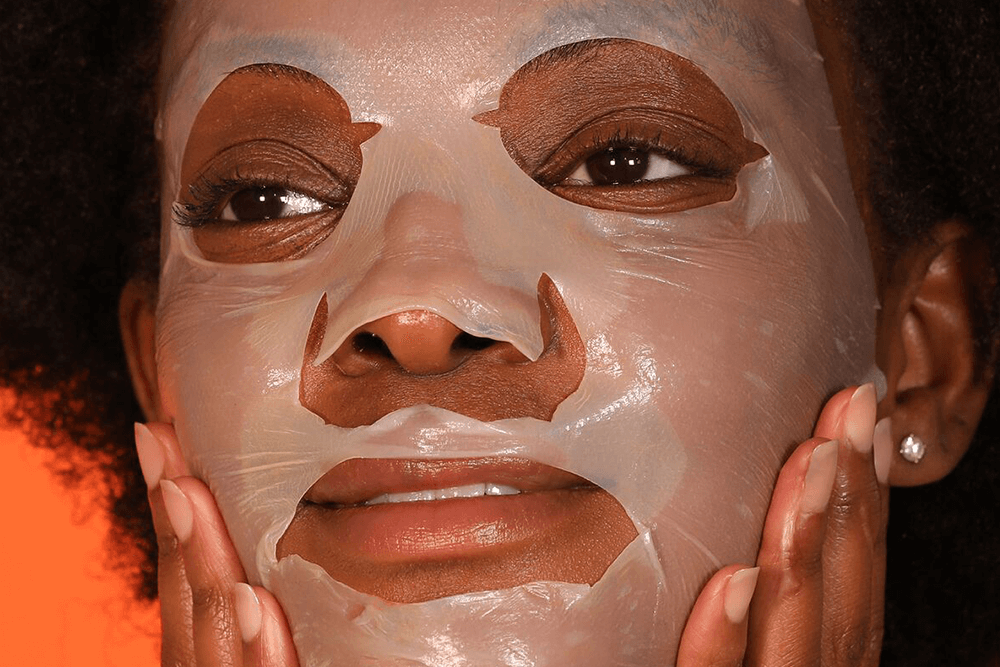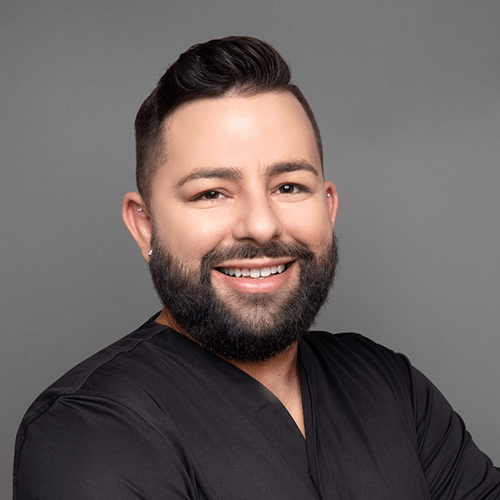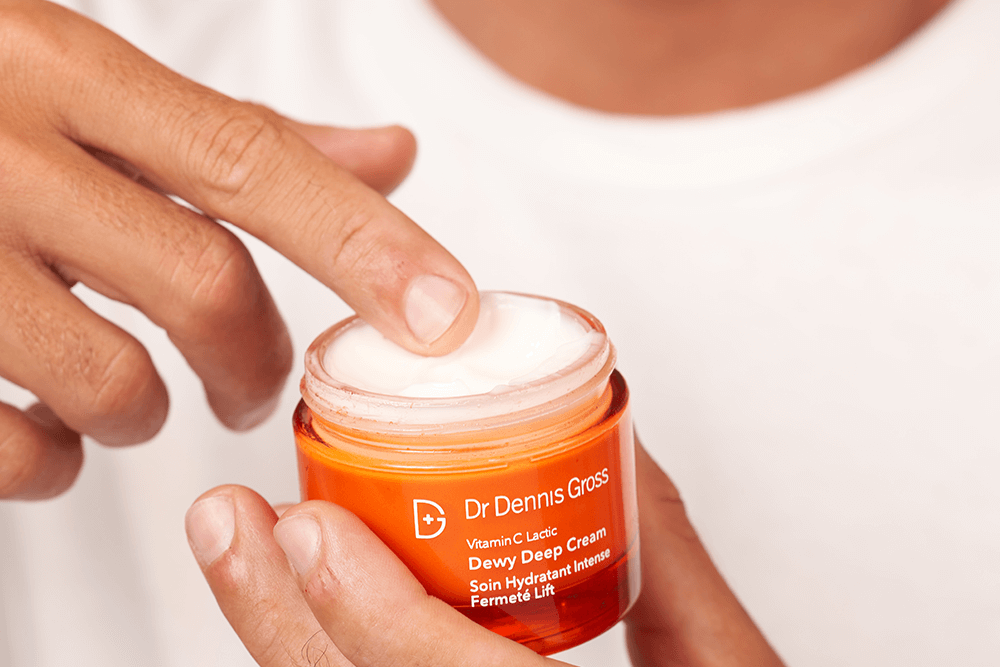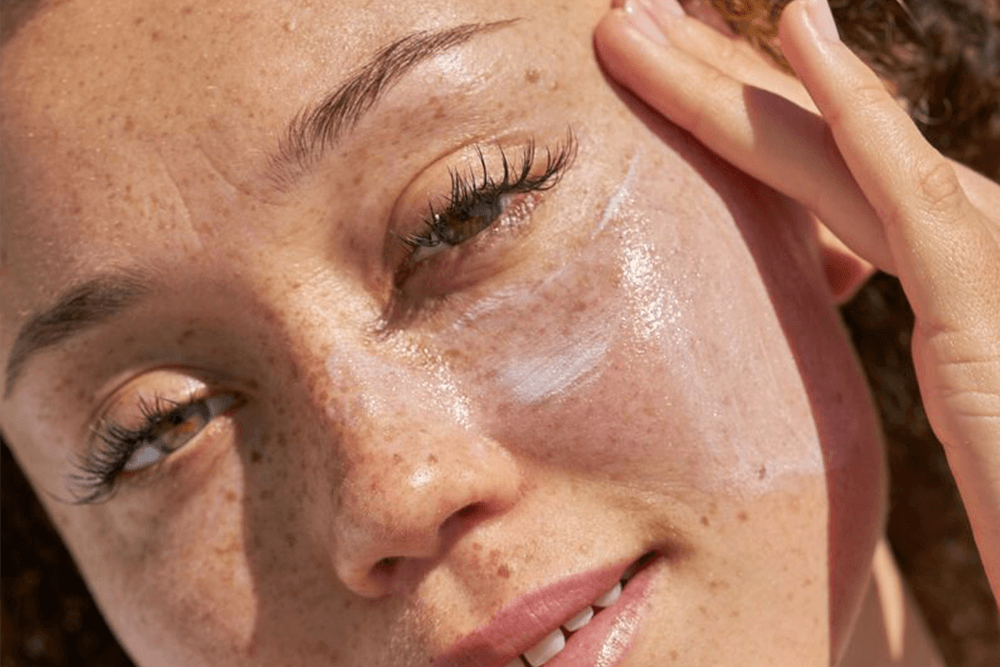The+Source
Our dermatologist founder Dennis Gross, MD, became famous for his skincare innovation, not imitation. After all, this is the man who brought the world the first two-step, at-home, alpha and beta hydroxy acid chemical peel (hello, Dr. Dennis Gross Alpha Beta Daily Peels) and an LED face mask containing more light-emitting diodes (160+) than any other on the market. So, if he’s going to make something as ubiquitous as a sheet mask, you know it’s not going to some run-of-the-mill version you can find from a hundred other skincare companies. Please meet our new Dr. Dennis Gross Vitamin C Lactic Biocellulose Brightening Treatment Mask.
Why it’s unique
The latest introduction in our Vitamin C Lactic line, Dr. Dennis Gross Vitamin C Lactic Biocellulose Brightening Treatment Mask combines all the ingredients that have made the Vitamin C Lactic collection such a fan favorite since its debut in 2022. That means a potent dose of antioxidant vitamin C enhanced with the inclusion of lactic acid, an alpha hydroxy acid, as well as niacinamide (aka vitamin B3). This power trio is delivered deep into skin via a contour-hugging, full-face sheet mask made from biodegradable coconut fibers. The result is a visibly renewed complexion after one 15-minute treatment. Skin that feels more hydrated and energized.
Our new mask works wonders on all skin types, although if you have rosacea or other skin sensitivity, you should proceed with caution.
Magic ingredients
There are three actives that make our Dr. Dennis Gross Vitamin C Lactic Biocellulose Brightening Treatment Mask such a skincare star.
L-ascorbic acid
Topical vitamin C is available in many forms. (This is why you never see simply “vitamin C” listed on a product’s ingredient panel.) A cosmetic chemist needs all these options because vitamin C is wildly unstable and formulating it with other ingredients while maintaining vitamin C’s potency and efficacy is tricky business. The type of vitamin C that works in one formula may not produce the same results in a different ingredient mix. That said, a formulator’s first choice is always L-ascorbic acid. It’s the purest form of vitamin C (read: the most potent) and also has been shown to absorb the best into skin.
Once vitamin C hits your face, it’s game on. Famous for its antioxidant prowess, vitamin C gobbles up collagen-destroying free radicals like Pac-Man on overdrive. At the same time, it’s kicking the enzymes involved in collagen production up a notch. That’s a win-win, if your goal is firmer skin with fewer fine lines.
A consummate multitasker, vitamin C also helps block the enzyme that spurs melanin formation. This helps decrease the appearance of hyperpigmentation and gives the complexion a brighter, more even appearance overall. Finally, vitamin C increases skin’s barrier function, which makes skin both more resilient and more hydrated (since a strong skin barrier prevents water from evaporating from the tissue).
Lactic acid
You know it as a member of the alpha hydroxy acid (AHA) family, prized for its ability to exfoliate skin with kid gloves. Gently getting rid of that cellular buildup on the reg with lactic acid means that your vitamin C can absorb deeper and more easily into skin because it doesn’t have to get past roadblocks of dead cells stuck to your skin’s surface. That maximizes the opportunity for vitamin C to deliver its best possible complexion-boosting results.
But like its counterpart vitamin C, lactic acid can do more than one thing at a time. In this case, lactic acid also stimulates the production of ceramides and GAGs (glycosaminoglycans). Both are critical components of a strong and healthy skin barrier. And as noted above, when barrier function is running optimally, it keeps the good stuff (moisture) in and the bad stuff (irritants) out. Promising new research also indicates that lactic acid may be able to neutralize free radicals in the lipid layer of skin, which is just one more reason to love lactic acid.
Niacinamide
The topical form of vitamin B3, niacinamide is an antioxidant that also regulates sebum production and increases the number of ceramides your skin is pumping out. (Clearly, reinforcing the skin barrier is a theme here.) Niacinamide has the added benefit of being an anti-inflammatory, which means that when applied topically, niacinamide can help reduce irritation and redness. Bonus!
How to incorporate the Dr. Dennis Gross Vitamin C Lactic Biocellulose Brightening Treatment Mask into your skincare regimen
Designed for weekly use, the Dr. Dennis Gross Vitamin C Lactic Biocellulose Brightening Treatment Mask makes an ideal skin booster. It’s also been formulated to be used in tandem with LEDs for maximum benefits. Since skin boosting is a nightly routine, on evenings you want to use your new mask, follow these steps:
- Cleanse and dry your face.
- Apply your Dr. Dennis Gross Vitamin C Lactic Biocellulose Brightening Treatment Mask, smoothing over facial contours for a couture fit, and allow to sit for 15 minutes. Remove mask and massage any excess product into skin.
- Meanwhile, put on your Dr. Dennis Gross DRx SpectraLite FaceWare Pro and select your favorite pre-programmed three-minute treatment. Once the treatment ends, continue wearing your Vitamin C Lactic Biocellulose Brightening Treatment Mask.
- Follow with your serum of choice (retinol is always a popular nighttime pick).
- Finish with the moisturizer appropriate for your skin type.
Discover Dr. Dennis Gross Skincare for All Your Skincare Needs
For more skincare tips from the experts at Dr. Dennis Gross, check out our blog’s newest content today. Shop the collection of Dr. Dennis Gross bestselling skincare backed by dermatologists.








